Essential pianos and home keyboards for 2023
GEAR EXPO 2023: Top keyboards and pianos, from budget to five figures (and six colours)
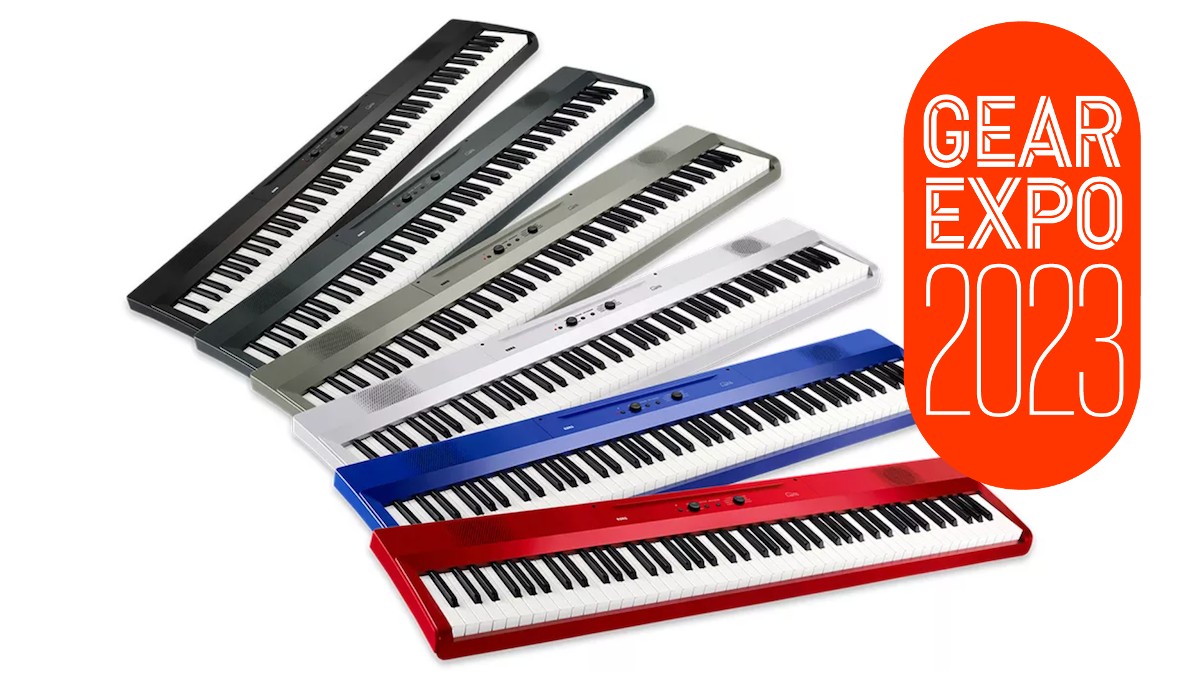
GEAR EXPO 2023: You might have thought that digital pianos only come in black, but far from it. 2023 looks like being the year of keyboards in all shapes, sizes and colours, and we've got the best – and most colourful – right here.
The electric piano and home electronic keyboard market is as busy as ever, with electric pianos in particular branching out from stuffy, unapproachable 'boards into attractive, affordable (and, ok, sometimes less affordable) options that cover all bases.
We've got all the newcomers for the year here. With models that mirror a rainbow to more expensive options that might be asking up to five figures, there is something, as they say, for everyone. There are even some good old traditional black ones…
Roland FP-E50
Roland has great form in the piano market, of course, but looks to be shaking that very market up with its lates release. Its newest portable digital piano - the FP-E50 - brings the company’s ZEN-Core synth engine along for the ride.
ZEN-Core is Roland’s current flagship synthesis system - the one used in the likes of the Jupiter-X and Fantom workstation keyboards - and its inclusion gives the FP-E50 a notable point of difference in comparison to other digital pianos.
In the case of the FP-E50, ZEN-Core supplies 1018 onboard sounds (synths, brass, orchestral voices, guitars/basses, drums and more). These can be layered with the all-important piano tones that come included.
Said tones are generated using Roland’s renowned SuperNATURAL piano engine, and can be played on the 88-note hammer-action keyboard, which offers escapement and an ivory-like feel. More ZEN-Core sounds can be added via Roland Cloud.
Want all the hottest music and gear news, reviews, deals, features and more, direct to your inbox? Sign up here.
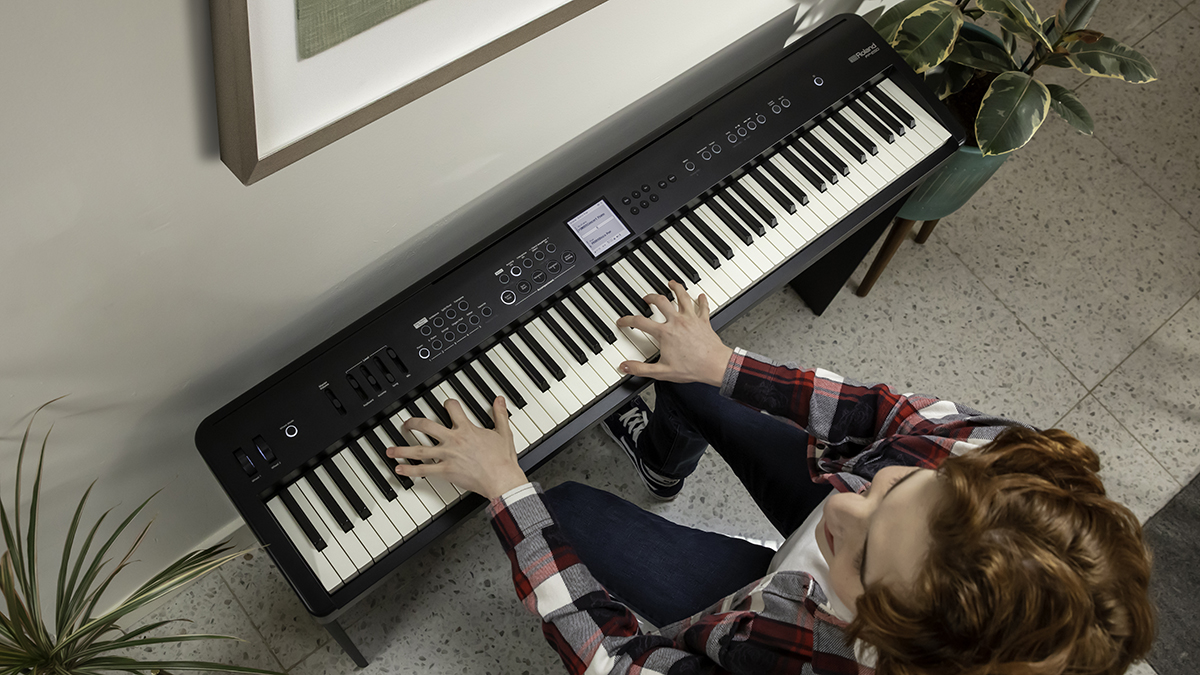
Although it’s designed for home use, the FP-E50 is also portable, and you can hook it up to external speakers if you wish. Other connectivity options include a headphone output, Bluetooth audio/MIDI and computer integration via USB.
Accompaniments are triggered using your left hand. Beginners can use one-note triggering, and there’s full-chord detection for more advanced players. An Interactive mode enables you to adjust the volume and “energy” of the backing in real-time, and you can set up chord progressions for improvisation in a dedicated sequencer.
There are vocal effects built in too. Plug in a mic, start singing and the FP-E50 can generate real-time vocal harmonies that follow the chords, and there's a transformer that can switch your vocals' gender or turn you into a robot. Further "studio-grade" vocal effects include a vocoder, an ambience effect, a compressor and a noise suppressor.
Navigation around the FP-E50 looks fairly straightforward. The top-level display shows you the current sound, tempo and other information, and it’s easy to make sound selections, favourite specific tones, transpose and more. Long-press functionality on many buttons is designed to cut down on menu diving, and you can save complete keyboard setups as Scenes.
The FP-E50 costs $1,000. Find out more on the Roland website.
Yamaha’s TC3 TransAcoustic

It's the best of both worlds, as Yamaha’s new TC3 TransAcoustic pianos promise the feel of an acoustic upright and the benefits of digital technology.
The new TC3 models – including the b1, b2 and b3 – were announced at the NAMM show and are the latest in Yamaha's range of TransAcoustic pianos. Like other products in the TransAcoustic line-up, these promise to give you the sound and touch of an acoustic piano, but also enable you to mute or control the volume digitally.
The system works by attaching a transducer to the soundboard, and is designed for those times when you need to practise quietly. Yamaha first introduced the TransAcoustic piano concept back in 2014, but with the TC3, it’s adding the technology to its b series, JU109 and UJ1 compact upright pianos.
The transducer used here has been developed specifically for uprights; it converts digital sound information into vibrations and delivers them to the soundboard. This in turn vibrates and joins the resonance of the strings to turn the entire piano into a resonator. Digital sound sources can be used to produce “natural acoustic sound” from the body of the piano, meaning it’s possible to control the volume when playing without the need for headphones.
Yamaha has also included its Articulation Sensor System. This places sensors under all 88 keys, and these communicate wirelessly with the piano to create what’s said to be a more natural playing experience.
On the sound front, meanwhile, Yamaha's Grand Expression Modeling technology promises to deliver rich tonal variation by detecting the force and acceleration of the keystrokes and changing the audio output in real-time.
In another nod to modernity, the TC3 pianos also include Bluetooth audio and MIDI for syncing with apps such as the Yamaha Smart Pianist.
Prices and release dates for the TC3 pianos are still to be confirmed, but you can lift the lid on them on the Yamaha website.
Korg Liano
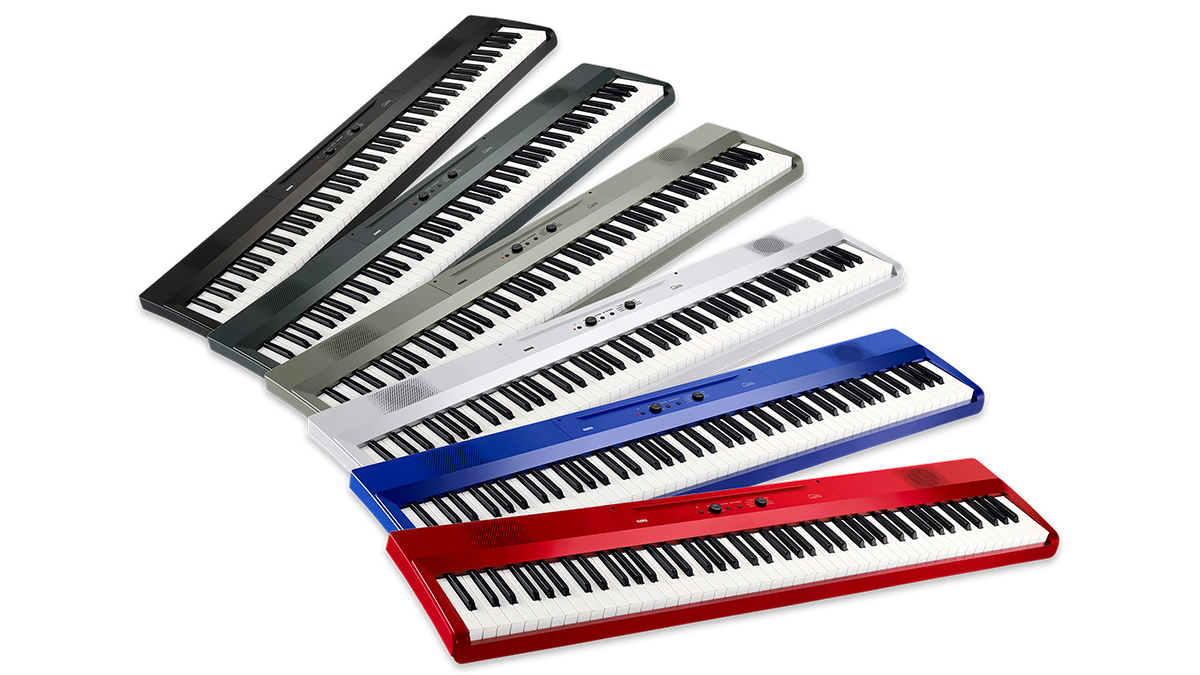
Different colours make a difference, right? So Korg's Liano piano will definitely make a difference in 2023.
Yes Korg’s Liano might have been launched last year, but five striking new colours for this year make it 'so last year'. Liano is a slimline 88-note digital piano with a beginner-friendly, soft-touch key action. It’s also portable: you can power it from batteries and it has a pair of built-in bass reflex speakers.
In addition to the original black, you now have pearl white and metallic grey, silver, blue or red options to choose from.
So, which one should you go for? If you want to play it totally safe, black is the obvious choice (no one’s going to be scared by that if you decide to sell at a later date) and the grey and silver options look pretty conservative, too. The white Liano is a little bolder, but we’d be worried about marking its pristine finish.
Which leaves metallic blue and red. There are quite a few red keyboards on the market already - we’re looking at you, Nord - but the blue option is genuinely distinctive. As such, this would be our choice, but feel free to disagree.

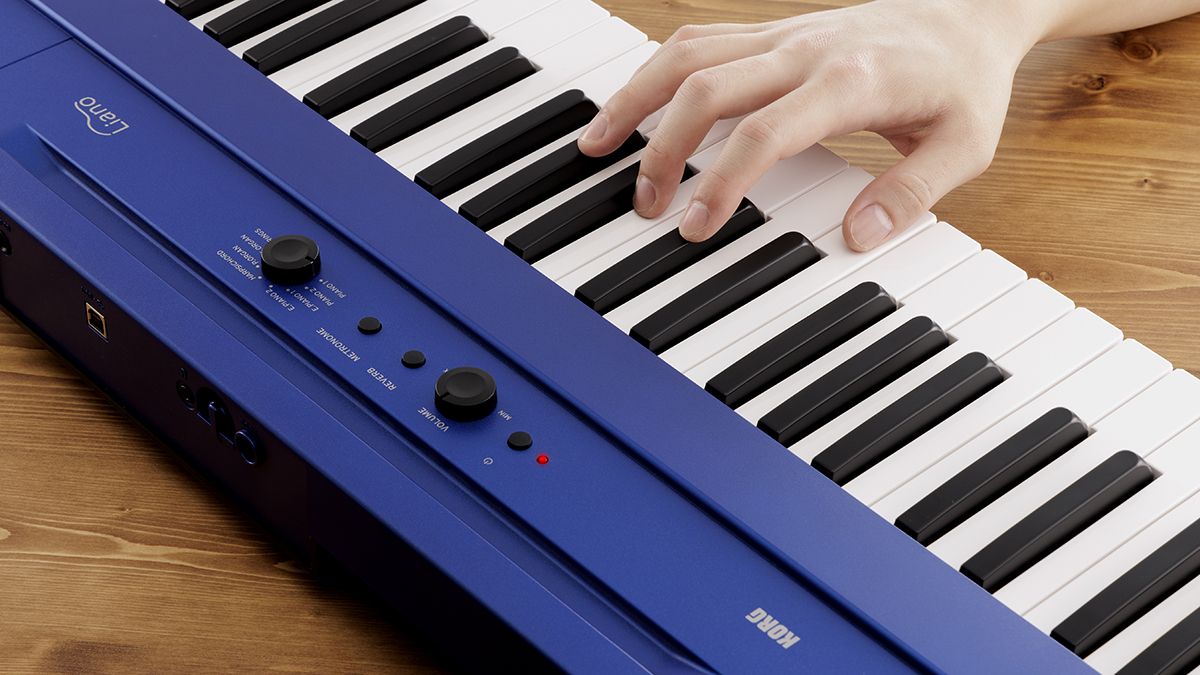
In performance and sonic terms, of course, it doesn’t really matter. The beating heart of all the Lianos is an Italian grand piano, and there are seven further sounds to play with, too. The Liano is a mere 7cm tall, weighs 6.2kg and offers USB MIDI and audio.
As you can see, the control set has been kept simple. There’s no screen, so sounds are selected via a labelled dial. There are reverb and chorus effects, too.
Liano costs £339. Find out more on the Korg website.
Yamaha CK88 and CK61
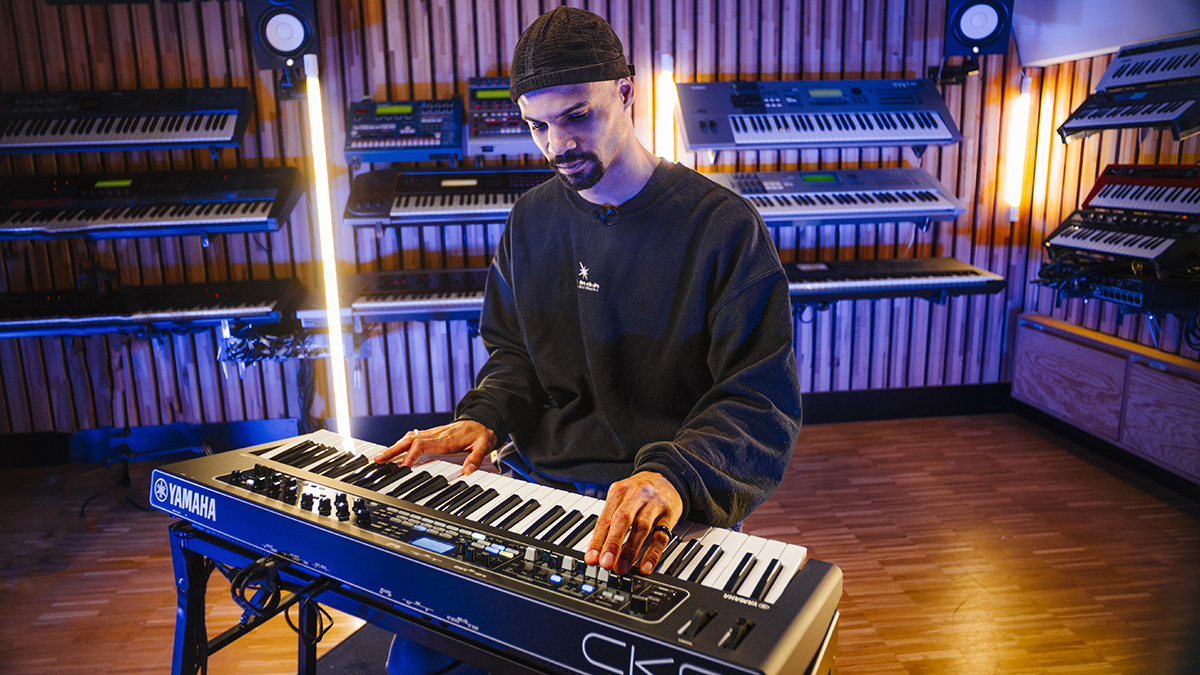
Yamaha's new CK range of pianos sets itself apart by putting the focus on portability.
The new 88-note CK88 and 61-key CK61 both promise the sounds of the company's CP and YC keyboards but in a more compact, lightweight form factor (13.1kg and 5.6kg respectively). And with both models able to be powered by eight AA batteries and with built-in speakers, the theory is that you can pitch up and play pretty much anywhere.
The soundset on the new models covers pianos, electric pianos, strings, brass, organs and “modern synths”, and you can spread these across three keyboard zones or layers to create more complex patches and increase your performance options.
Each part can be processed with the built-in effects - like filters, envelopes, modulation processors, delay and reverb - and there’s also a final global effects section that features a master EQ.
Yamaha also promises intuitive control, with all important parameters right under your hands, and the three-part sound architecture is designed to make it easy to switch between sounds and combine them during a performance. The colour coding of the switches can be customised, so you can quickly see which parameters are active for each part.
There are dedicated organ drawbar controls, too, and the aforementioned effects are said to be quick to adjust.

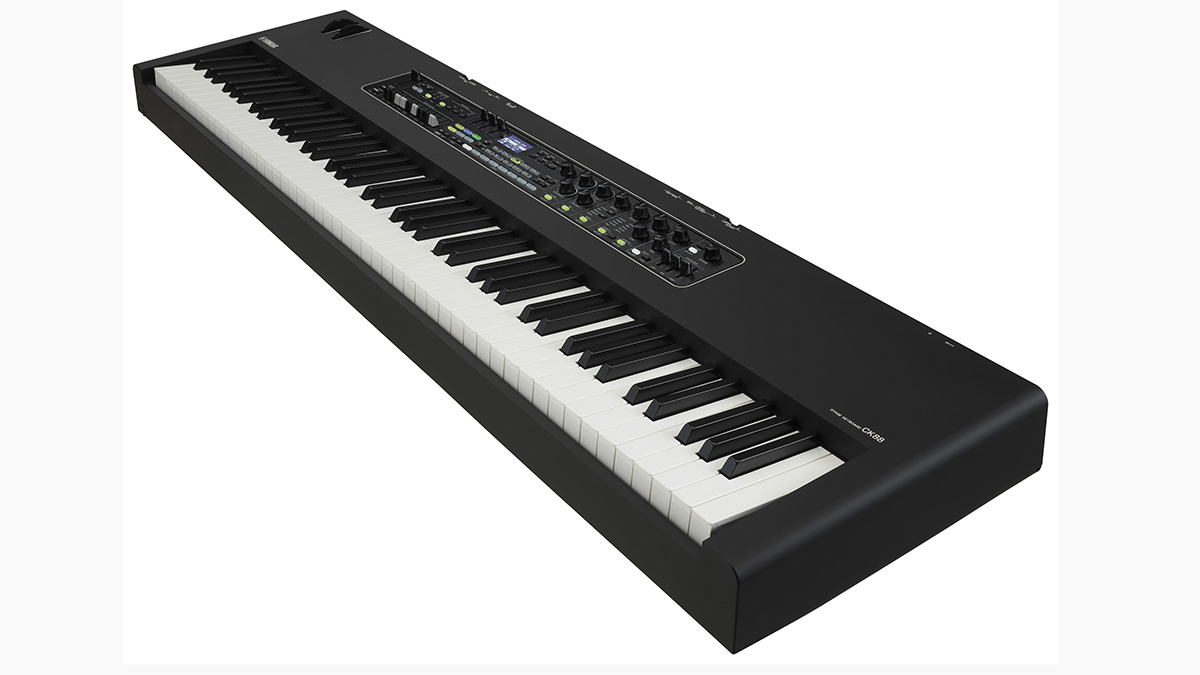
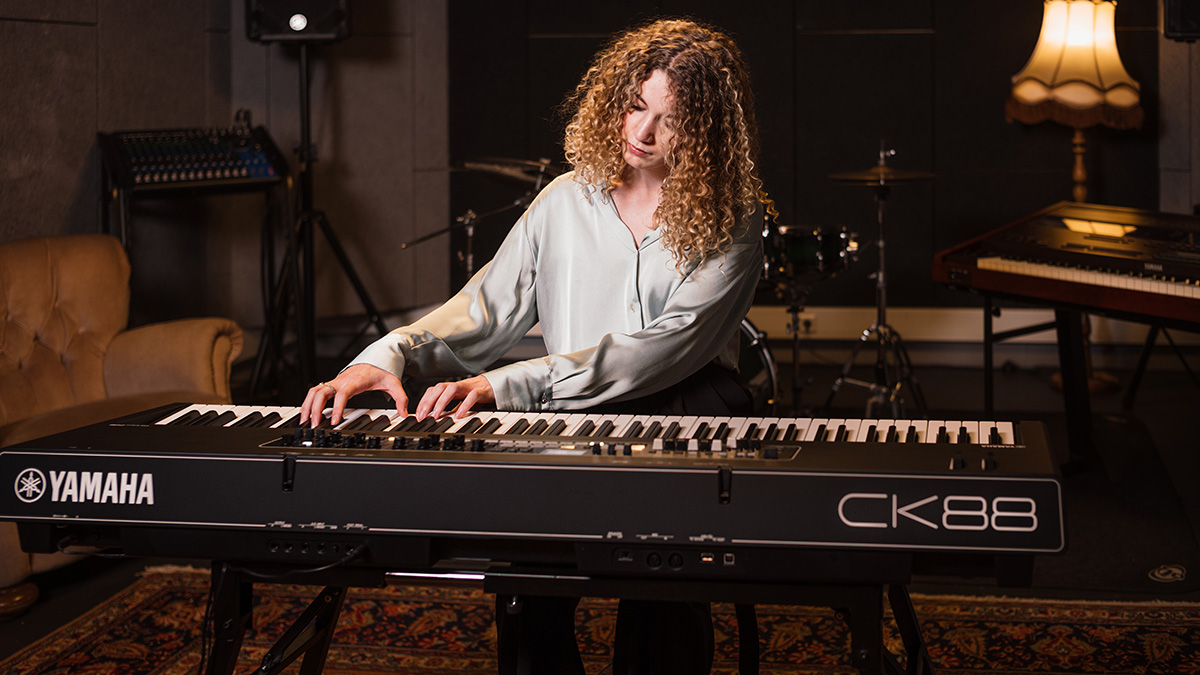
The smaller CK61 features lightweight ‘Future System Basic’ (FSB) keys and has an action inspired by that of old Electone organs such as the FX-1. With a heavier initial key resistance and increased travel, we’re promised more expression and greater stability, and a feel that should be perfect for organs, electric pianos, strings, synths and more.
The CK-88, meanwhile, has ‘Graded Hammer Standard’ (GHS) keys for a more piano-like experience.
Other features include Bluetooth audio connectivity, mic/line-in, MIDI/DAW control and audio interfacing.
The CK88 and CK61 will be available in April priced at £1,567 and £1,008 respectively. Find out more on the Yamaha website.
Roland GP Range
Roland's GP pianos are the company's flagship range and designed to look as good as they sound. We’d already seen the ultra-compact GP-3, and now the range includes the GP-6, GP-9 and GP-9M.
The GP-9 and GP-9M sit at the top of the range, coming in large cabinets that are finished in either high-gloss ebony or polished white. The ‘Piano Reality Concert modelling’ represents Roland’s latest technology and is designed to emulate every element of an acoustic piano - from the soundboard material and frame to the strings, hammers and more.
These models offer unlimited polyphony, notes and resonances, a progressive hammer action keyboard with escapement, hybrid wood/moulded key construction with Ivory Feel, and advanced acceleration sensing technology for accurate detection of the subtlest playing nuances.
You even get haptic feedback from the keys that’s designed to emulate the physical resonances of an acoustic piano’s body, along with “high-performance” sustain, soft and sostenuto pedals with a weighted feel and damper modelling.
As you’d expect, careful attention has also been paid to the sound system, which promises multi-channel amplification, premium audio circuitry and advanced sonic processing to create an immersive, surround experience.
The guts of the GP-9 and GP-9M are the same, but the latter model is notable for its self-playing key function. It also comes with pro-level audio outputs and a mic input that enables you to sing along through the onboard speaker system.
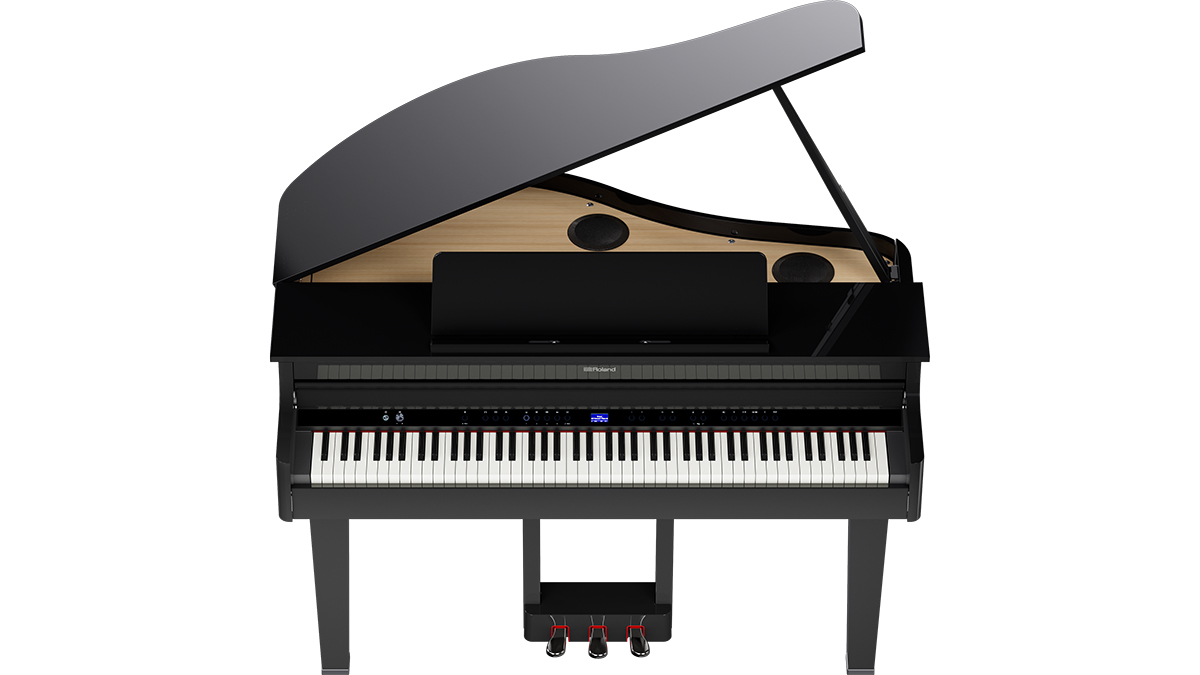

The GP-6 is the mid-level piano in the range. Again, you get the Piano Reality Premium modelling sound engine and keyboard and unlimited polyphony, and even though the cabinet is smaller, we’re still promised amazing sound.
The GP-6 and GP-9 are now available priced at $6,300 and $11,000 respectively. The GP-9M will arrive in May for a whopping $19,000, while at the other end of the scale, the GP-3 can be had for $4,000.
Find out more on the Roland website.
Nord Stage 4
Finally, a strong contender for one of the best keyboards on the market.
The Stage is Nord's high-end performance keyboard, and the fourth incarnation sees a new control panel design, an improved keybed, expanded effects section, an updated synth engine and more.
The Stage 4's new control panel design is aimed at making the instrument more intuitive to use, and features a completely new layout and dedicated LED faders for each sound layer, with the majority of knobs and switches controlling one dedicated parameter. The keyboard has been equipped with a new preset library, to make accessing sounds quicker and easier.
The instrument's keybed has been redesigned, an improvement many Nord fans were hoping for. The previous generation's keyboard has been replaced by a triple-sensor hammer action keybed with aftertouch, with the triple-sensor technology constituting the update.
The Stage 4's Piano Library has been bolstered with an enhanced collection of grands, uprights and electric pianos, while the instrument's synth engine has been upgraded to operate using Nord's Wave 2 technology, taken from their synthesiser of the same name. This offers virtual analogue, FM, wavetable and sample-based synthesis, an updated arpeggiator, and an expanded stock sample library with an increased 1GB of onboard memory.

Nord's new keyboard has also been outfitted with physical drawbars to control the onboard organ emulator, a feature taken from the Stage 3 Compact that was notably absent on the Stage 3. The effects section has been improved significantly, delivering a complete and independent set-up of effects for each sound layer. The new pump effect allows for tempo-synced or pedal-controlled sidechain modulation, while an upgraded reverb has been bolstered by spring, booth and cathedral settings.
The Stage 4 comes in three different models: an 88-key version, a 73-key version, and the Nord Stage 4 Compact, a smaller and more portable 73-key edition. Clavia has also announced the release of a new premium pedal range that controls a variety of the Stage 4's new features.
The Stage 4 88 is retailing at $5699/£4399, with the Stage 4 73 coming in at $5399/£4111 and the Stage 4 Compact at $4899/£3869.
Find out more on Clavia's website.
Looking for more great new gear? Get all our round-up, news, features, tutorials, tips and more at our Gear Expo hub page.


Andy has been writing about music production and technology for 30 years having started out on Music Technology magazine back in 1992. He has edited the magazines Future Music, Keyboard Review, MusicTech and Computer Music, which he helped launch back in 1998. He owns way too many synthesizers.
